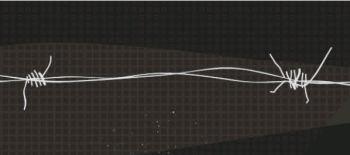Report from the exhibition organized by the Pilecki Institute
On 9 December 1948 the United Nations unanimously adopted the Convention on the Prevention and Punishment of the Crime of Genocide. Genocide became a crime under international law. Present at this event was the author of the term “genocide” and the principal editor of the draft of the Convention – a Polish lawyer of Jewish ethnicity, Raphael LEMKIN.
The concept of genocide was a direct response to the experience of the Second World War, and in particular to the Holocaust which took the lives of Lemkin’s almost entire family. Other milestones in the development of the notion included Lemkin’s personal experience of anti-Semitism in the Russian Empire, and events such as the extermination of Armenians committed by Turkey in 1915-1917 and the Terror-Famine (the Holodomor) in Ukraine. The idea expressed in the question “Why is the killing of millions of people considered a lesser crime than the killing of an individual?” led Lemkin to conceptualize this type of crime in a new way.
He studied law at the Jan Kazimierz University in Lwów – the world-class center of jurisprudence and legal thought located in a place of symbolic value to many nations, religions and cultures. He wrote his doctoral dissertation under Professor Julius Makarewicz, the “father” of the Polish Penal Code of 1932. Lemkin’s book entitled “Axis Rule in Occupied Europe”, published in 1944 in Washington, marked the beginning of a new academic discipline – genocide studies. It was also the first publication to use the term “genocide” to denote a deliberate, intentional physical destruction or creation ofconditions for the destruction of entire communities – national, ethnic, religious, or racial groups – on the basis of their otherness.
The Genocide Convention, sometimes referred to as Lemkin’s Convention, still remains a foundation of international criminal law.
Below we present a report from the temporary exhibition which was held in Kordegarda, the Gallery of the National Centre for Culture in Warsaw, from 4 December 2018 to 6 January 2019. The exhibition was organized by the Pilecki Institute as part of the project “Lemkin 2018-2023”.
Links
Pilecki Institute: https://instytutpileckiego.pl/en/



